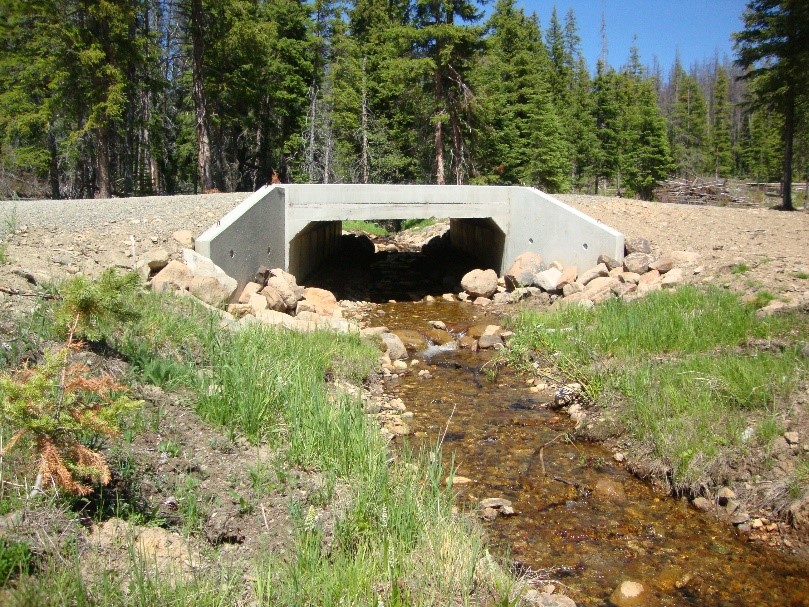is an innovative approach to managing water resources. In this article, we will discuss the concept of the circular economy and how it can be applied to water. You will learn about the importance of recycling water, the different ways it can be reused, and the benefits of implementing a circular water system. Additionally, we will explore practical examples of circular water economy initiatives around the world. Join us as we delve into the fascinating world of the circular economy of water!
Exploring the Circular Economy of Water
Water is a limited resource that plays a crucial role in supporting life on Earth. It is essential for our daily activities, including drinking, cooking, hygiene, and irrigation. However, the increasing population and industrialization have placed a significant strain on water resources, resulting in water scarcity in many regions. To address this challenge, the concept of the circular economy has emerged as a promising solution for sustainable water management.
The Importance of Water Conservation
Water conservation is vital to ensure that future generations have access to this precious resource. By conserving water, we can reduce the strain on freshwater sources, protect ecosystems, and mitigate the effects of climate change. Water conservation also helps to reduce energy consumption and lower water treatment costs.
Challenges of Water Scarcity
Water scarcity is a pressing issue that affects millions of people worldwide. It can lead to social, economic, and environmental challenges, such as the displacement of communities, food shortages, and conflicts over water resources. As water scarcity continues to worsen, it becomes imperative to explore innovative approaches to mitigate its effects.
Understanding the Circular Economy
The circular economy is a holistic approach to resource management that aims to minimize waste, maximize resource efficiency, and promote long-term sustainability. It is based on the principles of reducing, reusing, and recycling resources to create a closed-loop system. Applying the circular economy to water management can help us optimize water use, reduce pollution, and create a sustainable water future.
Concept and Principles of Circular Economy
The concept of the circular economy revolves around the idea of keeping resources in use for as long as possible and extracting maximum value from them. It promotes the adoption of innovative technologies and processes that minimize waste generation and resource depletion. The principles of the circular economy include designing products for durability and recyclability, implementing efficient recycling systems, and encouraging the use of renewable energy sources.
Applying Circular Economy to Water Management
In the context of water management, the circular economy focuses on optimizing water use, treating wastewater to high-quality standards, and reusing it for various purposes. Advanced water treatment technologies play a crucial role in this process, as they enable the removal of contaminants and the production of treated water suitable for reuse. By implementing water reuse systems, we can close the loop and reduce dependence on freshwater sources.
Sustainable Water Treatment and Reuse
Advanced water treatment technologies are essential for achieving sustainable water management and resource recovery. These technologies allow for the removal of pollutants, microorganisms, and other contaminants from wastewater, making it safe for reuse. Some of the commonly used advanced treatment processes include membrane filtration, ultraviolet disinfection, and reverse osmosis.
Benefits of Water Reuse in the Circular Economy
Water reuse offers numerous benefits in the circular economy. Firstly, it helps to alleviate water scarcity by reducing the demand on freshwater sources. Secondly, it reduces the discharge of wastewater into natural water bodies, preventing pollution and protecting ecosystems. Additionally, water reuse can provide a reliable and cost-effective alternative for non-potable applications such as irrigation, industrial processes, and toilet flushing.
Water Stewardship in Industries
Industries play a significant role in water consumption and pollution. To mitigate their impact on water resources, it is crucial for industries to adopt strategies for efficient water use. This includes implementing water-saving technologies, optimizing processes to minimize water consumption, and recycling or reusing water where feasible.
Strategies for Efficient Water Use in Manufacturing
In the manufacturing sector, implementing water-saving initiatives can significantly reduce water consumption. This can be achieved through measures such as optimizing production processes, identifying and fixing leaks, and using water-efficient equipment and technologies. By adopting these strategies, industries can not only conserve water but also save on operating costs.
Adopting Water-Saving Practices in Agriculture
Agriculture accounts for a significant portion of global water usage. To promote sustainable water use in agriculture, it is crucial to adopt water-saving practices. These include precision irrigation techniques, such as drip irrigation and sprinkler systems, soil moisture monitoring, and crop selection based on water availability. Additionally, implementing water reuse systems in agriculture can further conserve water and enhance crop productivity.
Circular Economy in Urban Water Systems
Urban water systems face unique challenges due to population density and infrastructure limitations. To address these challenges, the circular economy provides integrated approaches for water management in urban areas. These approaches focus on optimizing water use, reducing leakage, and promoting the use of smart technologies for efficient water distribution.
Integrated Water Management Approaches
Integrated water management involves the coordination and optimization of various components of the urban water cycle, including extraction, treatment, distribution, use, and disposal. By implementing integrated water management approaches, cities can enhance water efficiency, reduce water loss, and improve the overall resilience of their water systems.
Smart Water Grids and Technologies
Smart water grids leverage digital technologies and real-time data to optimize water distribution and consumption. These systems enable the monitoring and control of water networks, leak detection, pressure management, and demand forecasting. By adopting smart water technologies, cities can improve water efficiency, reduce costs, and enhance customer service.
Governance and Policy Frameworks
Effective governance and policy frameworks are essential for promoting sustainable water management and circular economy principles. National and international water policies provide the foundation for regulating water resources, ensuring equitable access, and mitigating the impact of water scarcity.
National and International Water Policies
National water policies set the regulatory framework for water management within a country. They establish guidelines for water allocation, pollution control, and conservation measures. At the international level, organizations such as the United Nations and the World Health Organization promote global cooperation and develop policies to address water-related challenges.
Collaborative Approaches for Water Governance
Collaborative approaches to water governance involve the participation of multiple stakeholders, including governments, communities, industries, and civil society organizations. By fostering collaboration and engagement, these approaches can address water management challenges holistically and ensure the inclusion of diverse perspectives. Collaborative governance also promotes transparency, accountability, and the sharing of best practices.
Economic Opportunities in the Circular Economy
The circular economy presents significant economic opportunities, including job creation and the development of green business models. By transitioning to circular water management practices, new industries can emerge, offering innovative solutions, technologies, and services.
Job Creation and Green Business Models
The transition to a circular economy of water can generate a range of job opportunities, from research and development to operation and maintenance of water treatment and reuse systems. Additionally, the adoption of green business models, such as water reclamation and reuse businesses, can stimulate economic growth while promoting sustainable practices.
Investments in Water Innovation
Investing in water innovation is essential for driving the transition to a circular economy. Financial support from governments, private sector entities, and international organizations can fund research and development of new technologies, knowledge sharing, and capacity building. These investments can lead to breakthroughs in water treatment and reuse, creating sustainable solutions for water management.
Promoting Consumer Behavior Change
Consumer behavior plays a critical role in achieving a sustainable water future. Educating the public on water conservation and incentivizing sustainable water practices can inspire individuals to take action and contribute to collective efforts.
Educating the Public on Water Conservation
Public education campaigns can raise awareness about the importance of water conservation and provide individuals with practical tips on reducing their water consumption. These campaigns can be conducted through various channels, including schools, community centers, online platforms, and media outlets. By educating the public, we can foster a culture of water conservation and empower individuals to make informed decisions regarding their water usage.
Incentivizing Sustainable Water Practices
Incentives can encourage individuals to adopt sustainable water practices. This can be achieved through initiatives such as water-saving rebates, tax incentives for water-efficient appliances, and tiered pricing structures that promote water conservation. By providing tangible benefits for water conservation, we can motivate individuals to take proactive measures to reduce their water consumption.
Measuring and Monitoring Water Circular Economy
To evaluate the effectiveness of circular water management strategies, it is essential to establish appropriate indicators and collect relevant data. Measuring and monitoring water circular economy performance can help identify areas for improvement, track progress, and inform future decision-making.
Indicators for Evaluating Circular Water Management
Indicators such as water consumption per capita, water reuse rates, and water quality can provide insights into the effectiveness of circular water management practices. These indicators can be tailored to specific sectors, such as agriculture, industry, and urban water systems, to assess their performance and guide policy decisions.
Data Collection and Analysis for Performance Assessment
Collecting and analyzing data on water consumption, treatment efficiency, and resource recovery is crucial for evaluating the performance of circular water management initiatives. Data can be collected through metering systems, remote sensing technologies, and monitoring networks. Analyzing this data can provide valuable insights into the impact of circular water management strategies and guide future improvements.
Conclusion
Achieving a sustainable water future requires a transformation in our approach to water management. The circular economy offers a comprehensive framework that promotes resource efficiency, waste reduction, and the reuse of water. By embracing the principles of the circular economy, we can optimize water use, protect ecosystems, and create economic opportunities. Through collaborative governance, sustainable water treatment and reuse technologies, and consumer behavior change, we can build a resilient and circular water system that ensures the availability of this vital resource for generations to come. The circular economy of water is not merely a vision; it is a practical and necessary path towards a sustainable future.



